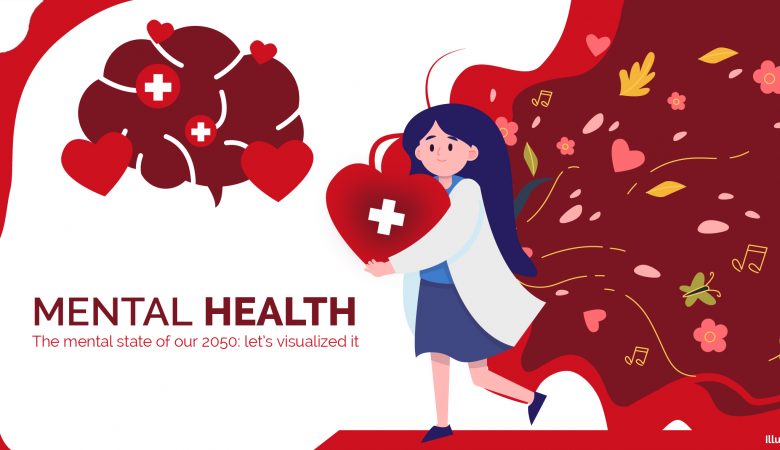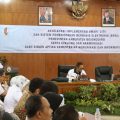Happy world mental health’s day, the human civilization of the near future produces a technology that allows objective monitoring and adjustment of every aspect of higher nervous activity: emotion, trains of thought, thought disorders, thoughts, images and sensations, desires, fears, hallucinations, delusions, intellectual capacity, experience, beliefs, and truth or lies in an individual. Some trailblazers succeed in making the technology the common property of the civilization, forestalling attempts by isolated groups. By 2050, more than two-thirds of the world's population will live in cities. Many mental health problems are more common in cities: Depression (39% more), Anxiety (21% more), Schizophrenia (double).
Mental disorders are now among the largest sources of medical disability worldwide. According to the World Health Organization, neuropsychiatric disorders account for at least 20% of the global burden of illness-related disability, and all represent complex disorders of brain function. The context is relevant as the basis of clinical neuroscience emanating from studies of etiology and pathophysiology of brain disorders directly impacts and influences the advances in assessment, treatment, and prevention of brain disorders. We believe that with time psychiatric disorders will be conceptualized as disorders of the brain and advances in assessment, treatment, and prevention are likely to originate from studies of etiology and pathophysiology based on clinical neuroscience.
There are several critical future challenges to psychiatry as a profession. One of these challenges is diminishing confidence in the knowledge base regarding diagnosis and management, and the perceived lack of a coherent theoretical basis. This has significant negative implications for research funding opportunities and attracting research-minded clinicians compared to the big hitters of medicine, surgery, and cancer research. Although mental health funding in most developed western countries has increased it is still much smaller in comparison to the other medical and surgical specialties, with the public health burden of mental disorders growing exponentially.
Psychiatry develops into a full-fledged discipline based on objective evidence. We have a clear understanding of when an individual is still sick and when he or she is no longer sick. This provides an impetus to the development of new treatment techniques and revision of current ones. The world realizes just how different we all are, how different the speaker’s intended meaning may be from what addressees interpret it to be. It turns out that we, in fact, hardly understand one another despite remaining in constant contact daily. That realization is truly frightening at first.
But then we bounce off that bottom and rebuild our social environment with these newly discovered circumstances in mind: no more miscommunication between generations, within families, workforces, communities, nations, or countries. Communication becomes fundamentally more efficient. The question of truth and guilt can now be answered definitively in daily life, in public administration, law, personal, and all other relationships. Public figures are obliged to disclose their mental state at the time of making decisions. Religious figures, politicians, philosophers, and activists can prove their ideas with their mental states.
Technology helps us to manage our thoughts better by providing mental feedback, and our civilization becomes a civilization of demonstrated awareness. Humans realize what they need, what they want, and what they are good at. Lifetime is now spent much more efficiently. Conflict management, mediation, and psychiatry become effective, evidence-based applied disciplines. Technology provides for direct communication of mental states between humans—interpreters are no longer needed. Information is now recorded and distributed as a cohesive sensory-information flow. Learning becomes relatively immediate and considers individuals' mental state characteristics and talents as the learners grow up.
Simultaneously, technology enables research into the mental worlds of many animals: apes, whales, dolphins, and many others. Effective interspecific communication is born. A new field of law forms: animals rights and duties, or even the rights and duties of species. They become participants in the building of civilization. Protection of the environment gets a powerful new impetus. New horizons open up for research into the intelligence of lower organisms as well as supraspecific formations like the noosphere or neural networks of the future.
In conclusion, it is our opinion that the future of psychiatry lies in the fields of biology, neuroscience, genomics, and research. It is important to remember however that in many of these areas progress and research are still in their infancy. A further understanding of the interplay of biology, genomics, and neuroscience will help clarify some of the mysteries of psychiatric diagnoses and morbidity. Classification systems and definitions of disorders will primarily incorporate neuroscience as a guide. The promise for psychiatry is dually paved with optimism and mystery and allows our successors to revolutionize the prevention, diagnosis, and treatment of mental disorders.
Mankind enters a new era united, transparent and just.
Writer : Diva Maharani | Illustrator : Akbar Nugroho
Reference:
- WHO. Mental Health and Development: Targeting People with Mental Health Conditions as a Vulnerable Group. World Health Organization Publication; 2010. [Accessed March 13, 2014]. pp. 1–65. Available from http://whqlibdoc.who.int/publications/2010/9789241563949_eng.pdf?ua=1. [Google Scholar]
- Highlights of Changes from DSM-IV-TR to DSM-5. [webpage on the Internet] [Accessed Jan 2014]. http://www.dsm5.org/Documents/changes%20from%20dsm-iv-tr%20to%20dsm-5.pdf.
- Chen CH, Lee CS, Lee MTM, et al. Variant GADL1 and response to lithium therapy in bipolar disorder. N Eng J Med. 2014;370:119–128. [PubMed] [Google Scholar]
- Farooq S, Aqid O, Foussias G, Remington G. Using treatment response to subtype schizophrenia: proposal for a new paradigm in classification. Schizophr Bull. 2013;39(6):1169–1172. [PMC free article] [PubMed] [Google Scholar]
- Andreasen NC. DSM and the death of phenomenology in America: an example of unintended consequences. Schizophr Bull. 2007;33:108–112. [PMC free article] [PubMed] [Google Scholar]
- Stein DJ. Classification systems in psychiatry: diagnosis and global mental health in the era of DSM-5 and ICD-11. Curr Opin Psychiatry. 2013:493–497. [PMC free article] [PubMed] [Google Scholar]
- Merikangas KR, Risch N. Will the genomics revolution revolutionize psychiatry? Am J Psychiatry. 2003;160:625–635. [PubMed] [Google Scholar]
- Hosak L. New findings in the genetics of schizophrenia. World J Psychiatry. 2013;3(3):57–61. [PMC free article] [PubMed] [Google Scholar]
- International Human Genome Sequencing Consortium Finishing the euchromatic sequence of the human genome. Nature. 2004;431(7011):931–945. [PubMed] [Google Scholar]
- Insel TR, Quirion R. Psychiatry as a clinical neuroscience discipline. JAMA. 2005;294(17):2221–2224. [PMC free article] [PubMed] [Google Scholar]





